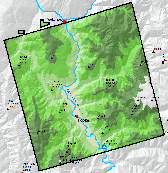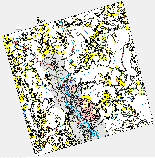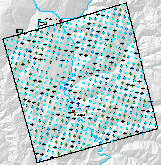
HOOPA TRIBAL FORESTRY
Hoopa Valley Tribal Reservation


The Ho opa Valley Tribal Reservation contains approximately 87,500 acres of commercial timberland with about 1.3 billion feet of commercially important timber species. In accordance with 25 CFR 163, the Tribe maintains an extensive Forest Management Plan.
opa Valley Tribal Reservation contains approximately 87,500 acres of commercial timberland with about 1.3 billion feet of commercially important timber species. In accordance with 25 CFR 163, the Tribe maintains an extensive Forest Management Plan.
 opa Valley Tribal Reservation contains approximately 87,500 acres of commercial timberland with about 1.3 billion feet of commercially important timber species. In accordance with 25 CFR 163, the Tribe maintains an extensive Forest Management Plan.
opa Valley Tribal Reservation contains approximately 87,500 acres of commercial timberland with about 1.3 billion feet of commercially important timber species. In accordance with 25 CFR 163, the Tribe maintains an extensive Forest Management Plan.
The Hoopa Forestry Planning Department maintains the Forest Management Plan, and oversees all Forestry activities to ensure that they fall within the parameters of the FMP. Because the Tribe is a federally funded Compact Tribe, most activities fall under the National Environmental Protection Act. The planning Department prepares NEPA documentation on all projects, including the Annual Allowable Cut (AAC). The Forest Planning Department is established to facilitate the Forestry activities.
The purpose of the Hoopa Tribal Forestry Planning Department is to ensure that all Tribal Forest activities are in compliance with the Tribe’s Forest Management Plan. There are 4 aspects to this compliance.
Forest Management Plan (FMP)
Forest management plans are required under current 25 CFR 163 guidelines as well as under the Indian Forest Management Act, November, 1990. Content of plans is governed by 53 IAM Chapter 2. In addition, Supplement 2 guides the process of developing management plans and accompanying environmental documentation.
To see the History of the Tribe’s Forest Management Plan see -
For a copy of the 2011 Forest Management Plan you must contact Tribal Forestry Directly. Plans are distributed under the discretion of the Forest Manager.
National Environmental Policy Act (NEPA) Compliance
All federally initiated, funded or approved projects require an assessment of the environmental consequences of federal "actions". The policy regarding NEPA is found at PL 91-190 , 42 U.S.C. 4371-4374. Regulations governing NEPA are found at 40 CFR Part 1500, 25 CFR 163.27, draft 25 CFR 163.34, Department of the Interior Manual
NEPA assessment of projects is initiated and completed under the direction of the Forest Manager. This assessment can: 1) be categorically excluded from NEPA significance assessments (CE's), 2) require an environmental assessment of the project effects (EA) , or 3) require an Environmental Impact Statement (EIS) if the project is controversial or causes significant effects (30 BIAM Supplement 1, 3.4B(17)). Decision Notices for CE’s are under the jurisdiction of the Forest Manager. However, for an EA or EIS, the "Decision Notice" documenting the decision selected is adopted by Council motion. The concurrence of a CE decision, approval of a Finding of No Significance justified through an EA and Record of Decision justified through an EIS are under the authority of the Pacific Region Area Director of the Bureau of Indian Affairs.
For a copy of the 2011 Forest Management Plan Revision Environmental Assessment see - 2011_FMP_EA_Public
For a copy of the FONSI for the 2011 Forest Management Plan Revision Environmental Assessment see - Hoopa FMP FONSI
For a list of current NEPA documents see - list
In 2005, it was noted that there are 150-250 human-caused ignitions on the Reservation each year, creating high fire risks. Vegetation structure had changed from historic conditions because fire suppression had replaced the frequent low intensity fires that formerly burned on the Reservation. This increased the fuel loading and the historical fire regime was replaced by a less frequent but more intense fire regime. Also, the removal of fire from the ecosystem allowed conifer trees to encroach in prairies and create fuel ladders in many conifer and hardwood stands.
Previous even-aged silvicultural practices resulted in large acres of plantations that are more susceptible to high rates of spread by wildfires. Because of these and other factors, Tribal Forestry brought in contractors to help draft a 10 year Fuels Management Plan. This was completed in 2008 and approved by the Tribe. An environmental Assessment was written approved by the Tribal Council on May 1, 2008. A subsequent FONSI was issued by the BIA on May 26/ 2009. Although it remains questionable as to whether or not the BIA has approved the actual plan. The plan was signed by the BIA, but there has been questions on the authority of the representative to sign the document.
Projects the Planning Department undertakes
Five-and-Ten-Year Timber Sale Plan
The FMP states that a Five-and-Ten-Year Sales Plan shall be updated on a yearly basis and shall replace the previous year’s plan. At all times, a projection of at least five years shall be maintained to allow for projection of units for survey purposes. In accordance with this the Five-and-Ten-Year Timber Sale Plan is update in January of each year.
Although this is mostly proprietary information, the first four pages of the current Plan can be seen here -year Sales Plan.pdf
The FMP states that a Five-
Although this is mostly proprietary information, the first four pages of the current Plan can be seen here -
Indian Affairs Manual 53 section 8.5A discusses Forest Invnetory of Reservation lands. It states:
The purpose of the Planning Inventory, also known as the Continuous Forest Inventory (CFI)
System on Category 1 Reservations, is accountability of the Tribal forest resource and scientific
basis for long-term planning. Planning Inventories must meet or exceed the following
national standards.
The Hoopa Reservation is a Category 1 Reservation and CFI’s must be held every 15-yers or less. For the past several decades this standard has been 10 years . The next schedule CFI will take place in 2016. Tribal Forestry is exploring the option of conducting this inventory over three years due to the complexity of the survey and the lack of funding. Click on map to the left to see the current CFI plots on the Reservation.
Timber Inventory Analysis
Once the Survey Data is collected and processed, the Tribe puts together a Timber Inventory Analysis. This is referred to in the IAM 53 Chapter 8 as a Forest Inventory Analysis. Item 8.6 states:
The analysis of Planning Inventory data shall be documented by a Forest Inventory Analysis [TIA] report approved by the Regional Director.
The substance of the functional elements will be unique to the resource and its beneficial owners’ aspirations for management. Prior to
approval, the [TIA] shall meet or exceed the following content standards according to Reservation Prioritization Categories defined in
53 IAM 2.8.A. The identified basic elements within each function shall be addressed with sufficient detail for clarity and understanding of the data.
The last TIA was completed in June of 2010. A copy of the Executive Summary of that Document is available, but the remainder is proprietary see here - 2006 TIA Executive Summary
Second Growth Plantation Inventory
It has been determined that although the CFI plots give a good overall measure of the volume growth, there is insufficient information to accurately predict t the volume of the second growth stands. In 2003 Tribal Forestry began an inventory of second growth stands. This inventory has continued as funds have been available. Surveys have been conducted in 2003 through 2006 and commenced again in 2009, 2010, and has continued since 2012. Currently a crew of two field Technicians survey 300 to 400 plots apiece each year.
Stream sediment Monitoring
Since 2001 Tribal Forestry has been sampling streams for sediment monitoring. Monitoring is done by collecting grab samples of water flowing through structures, such as culverts, and then measuring the flow of water. Water is then processed to determine how much sediment is being carried. By testing streams before during and after harvest activities, Tribal Forestry has observed the efficiency of the FMP stream protection measures. In 2010, the data was used in consultation with NMFS with regards to the proposed Timber Harvest in Bull Creek. This data gave no firm conclusions, but some inferences were made based on discernable variations. The paper noted that there was no difference in sediment and water flow following timber sales. However, after a fire, there were discernable differences in waterflow and sediment levels. For a copy of that paper click here - 2011 Bull Creek Sediment Analysis

HOOPA TRIBAL FORESTRY
HOOPA VALLEY TRIBAL RESERVATION
Po Box 368 - Hoopa, California 95546 - (530) 625-4284
All Rights Reserved - Copyright 2012 © Hoopa Valley Tribe
Hosted By: www.velotech.net
Powered By: Apache

